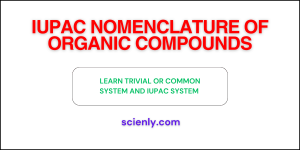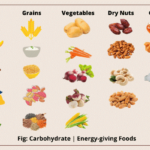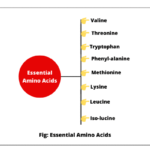Molecular Formula | How to Find Molecular Formula
What is molecular formula | A molecule is a smallest unit of a substance which exists independently and exhibits all the properties of that substance. We can represent a molecule by a formula in the terms of symbols and the number of atoms of elements present in it. This is called molecular formula.
A molecular formula is a symbolic representation of a molecule of any substance that expresses as the actual number of atoms of each element present in one molecule. For example, H2O is the molecular formula of water, indicating that two hydrogen atoms and one oxygen atom are present in a molecule of water.
Similarly, the molecular formula for benzene is C6H6, indicating that one molecule of benzene contains six carbon atoms and six hydrogen atoms.
Thus, the molecular formula of a substance or compound tells the names and actual number of atoms of various elements present in a molecule of a substance. In other words, a molecular formula of a compound expresses one molecular of a substance.
Therefore, it states the molecular or molar mass of the substance. For example, H2 is a molecular formula of hydrogen. This formula expresses the molar mass of hydrogen that is 2.016 g/mol-1.
Table of Contents
Examples of Molecular Formulas
Some examples of molecular formulas include:
- Water (H2O)
- Glucose (C6H12O6)
- Methane (CH4)
- Ethanol (C2H6O)
- Acetic acid (C2H4O2)
Importance of Molecular Formulas
There are the following importance of molecular formulas in chemistry because they gives the following informations:
- Molecular formula gives information about various elements present in the molecule.
- It gives the information about the molecular mass of the substance.
- Molecular formulas play a significant role in understanding the composition and structure of various compounds.
- They help to determine the properties of compounds, including their reactivity, solubility, boiling point, and melting point.
- These formulas give information about the types and numbers of atoms present in a molecule or a compound, which affects its chemical and physical characteristics.
- The number written before the formula tells the number of molecules. For example, 2H2O means 2 molecules of water.
- Molecular formulas also play a vital role in chemical reactions. The chemical reactions take place between molecules of different compounds or the same compound.
- The molecular formula of a compound helps to predict the products of a chemical reaction and to balance chemical equations.
Relationship between Empirical and Molecular Formulas
The molecular formula of a substance is related to its empirical formula as follows:
Molecular formula = n * Empirical formula = (Empirical formula)n, where n is an integer such as 1, 2, 3, . . . etc.
We can find the value of n by the following relationship:
n = Molecular mass / Empirical formula mass
From the above relationship, n is the ratio of molecular mass of a molecule or compound to its empirical formula mass. We can calculate the empirical formula mass by the adding atomic masses of various atoms represented by the empirical formula.
For instance, the molecular mass of glucose is 180u. The empirical formula of glucose is CH2O. Hence, its empirical formula mass is = 12 + 2 + 16 = 30u.
Thus, n = Molecular mass / Empirical formula mass = 180 / 30 = 6.
In case the value of n is one, then empirical formula and molecular formula of a compound are the same.
How to Find Molecular Formula in Chemistry?
We can find the molecular formula of a substance from the empirical formula if the molecular mass of the substance is known. The molecular formula is always a simple multiple of empirical formula and we can obtain the value of simple multiple by dividing molecular mass with empirical formula mass.
Example:
A compound has the following composition: 4.07% hydrogen, 24.27% carbon and 71.65% chlorine. Its molar mass is 98.96 g. What are its empirical and molecular formulas?
Solution:
Step 1: Conversion of mass percent into grams:
According to the percentage composition given, 100g of the above compound contains 4.07g hydrogen, 24.27g carbon and 71.65g chlorine.
Step 2: Convert into the number of moles of each element:
Divide the masses obtained above by respective atomic masses of various elements. It gives the number of moles of constituent elements in the compound.
Moles of hydrogen = 4.07g / 1.008g = 4.04
Similarly, moles of carbon = 24.27g / 12.01g = 2.021
Moles of chlorine = 71.65g / 35.453g = 2.021
Step 3: Determine the simplest ratio:
To get the simplest ratio, divide each of the mole values obtained above by the smallest number amongst them. In other words, divide the atomic ratio of each element by the minimum value of atomic ratio to get the simplest ratio.
Simplest ratio of hydrogen = 4.04 / 2.01 = 2
Simplest ratio of carbon = 2.01 / 2.01 = 1
Simplest ratio of chlorine = 2.01 / 2.01 = 1
Step 4: Determine the simplest whole number ratio.
Simplest whole number ratio of H = 2
Simplest whole number ratio of C = 1
Simplest whole number ratio of Cl = 1
Hence, the empirical formula of above compound is CH2Cl.
Step 5: Writing molecular formula:
(a) Find out empirical formula mass by adding the atomic masses of various atoms present in the empirical formula.
For CH2Cl, the empirical formula mass = 12.01 + (2 × 1.008) + 35.453 = 49.48g
(b) Find out the value of n by dividing molar mass by the empirical formula.
Thus, n = Molar mass / Empirical formula mass = 98.96g / 49.48g = 2
(c) Now multiply the empirical formula by n obtained above to get the molecular formula.
Thus, molecular formula = n * Empirical formula = 2 * (CH2Cl) = C2H4Cl2
More Examples based on Calculating Molecular Formula
Example 1:
A compound whose elements carbon, hydrogen, and nitrogen are in the ratio of 9 : 1 : 3.5. Calculate the empirical formula and molecular formula if its molecular mass is 108.
Solution:
Step 1: Calculation of empirical formula
| Element | Mass percent | Atomic mass | Relative number of moles | Simplest ratio | Simplest whole number ratio |
|---|---|---|---|---|---|
| Carbon | 9 | 12 | 9 / 12 = 0.75 | 0.75 / 0.25 = 3 | 3 |
| Hydrogen | 1 | 1 | 1 / 1 =1 | 1 / 0.25 = 4 | 4 |
| Nitrogen | 3.5 | 14 | 3.5 / 14 = 0.25 | 0.25 / 0.25 = 1 | 1 |
Thus, the empirical formula of the above compound is C3H4N.
Step 2: Calculation of molecular formula
Empirical formula mass = (3 x 12) + (4 x 1) + 14 = 54
n = Molecular mass / Empirical mass = 108 / 54 = 2
Thus, the molecular formula of the compound = 2 x Empirical formula = 2x C3H4N= C6H8N2 (Ans).
Example 2:
An organic compound on analysis was found to have the following composition: C = 57.82%, H = 3.60%, and the rest is oxygen. Its vapour density is 83. Determine its empirical and molecular formulas.
Solution:
Calculation of empirical formula:
| Element | Percentage | Atomic mass | Relative number of moles | Simplest ratio | Simplest whole number ratio |
|---|---|---|---|---|---|
| Carbon | 57.82 | 12 | 57.82 / 12 = 4.80 | 4.80 / 2.40 = 2 | 2 * 2 = 4 |
| Hydrogen | 3.60 | 1 | 3.60 / 1 = 3.60 | 3.60 / 2.40 = 1.5 | 1.5 * 2 = 3 |
| Oxygen | 38.58 | 16 | 38.58 / 16 = 2.40 | 2.40 / 2.40 = 1 | 1 * 2 = 2 |
Thus, the empirical formula of the above compound is C4H3O2.
Step 2: Calculation of molecular formula
Empirical formula mass = 12 * 4 + 1 * 3 + 16 * 2 = 83
Molecular mass = 2 * vapor density = 2 * 83 = 166
n = Molecular mass / Empirical formula mass = 166 / 83 = 2
Molecular formula = n * Empirical formula = 2 * (C4H3O2) = C8H6O4 (Ans).
Molecular Formula vs. Empirical Formula
The empirical formula represents the simplest ratio of atoms in a molecule, while the molecular formula represents the actual number of atoms in a molecule. The molecular formula is always a simple multiple of the empirical formula. For example, the empirical formula of glucose is CH2O, while the molecular formula is C6H12O6.






